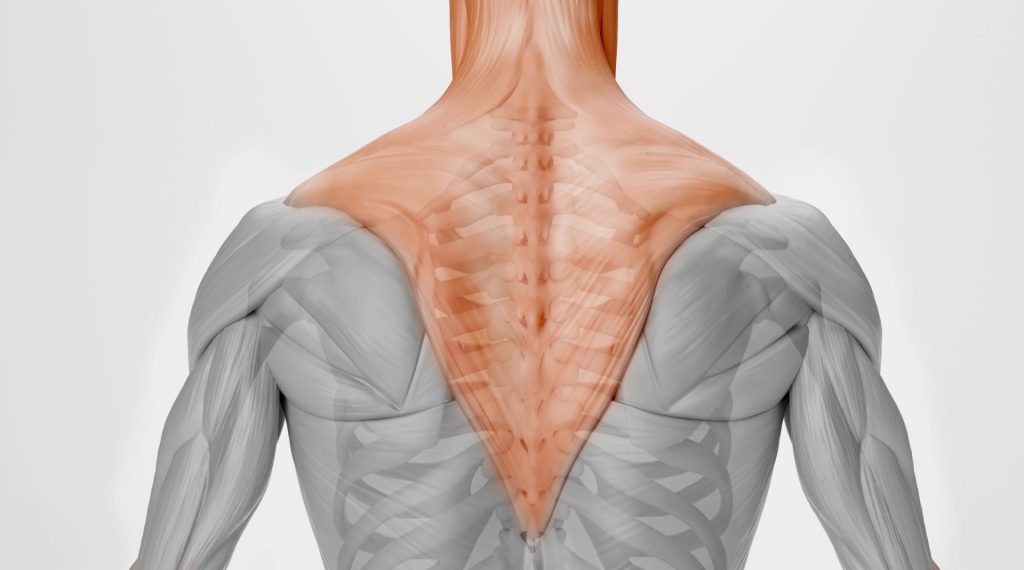Do you dream of having wide, defined lats that give you that coveted V-shaped back? If so, you’re not alone. Many fitness enthusiasts struggle to develop their lat muscles effectively. But fear not, because we’re here to help you finally achieve those lats of your dreams.
Lats, or latissimus dorsi muscles, are the biggest muscles in the back and are important for forming a cool V-shaped body.
However, growing these muscles can be challenging without the right knowledge and approach. Whether you’re a beginner or an experienced gym-goer, understanding how to properly train and grow your lats is key to achieving the back you’ve always wanted.
In this article, we will uncover the most effective strategies and exercises to help you maximize lat muscle growth. Say goodbye to skinny back syndrome and hello to a stronger, wider, and more impressive V-shaped back.
Contents
Nutrition For Lat Growth
Proper nutrition is not just important for overall health and fitness, but it also plays a crucial role in muscle growth and development. Here is how to optimize your nutrition for maximum lat growth. So let’s get started:
Increase Your Protein Intake
Protein is the building block of muscles, so it’s important to consume an adequate amount of protein for optimal muscle growth. Aim for a protein intake of around 1.2-1.5 grams per pound of body weight. Good sources of protein include lean meats, poultry, fish, eggs, dairy products, and plant-based proteins such as legumes, tofu, and quinoa.
Eat A Balanced Diet
While protein is important, it’s also essential to eat a well-balanced diet that includes a variety of nutrient-dense foods. Include plenty of fruits, vegetables, whole grains, and healthy fats in your meals. These foods provide essential vitamins, minerals, and antioxidants that support muscle growth and overall health.
Consume Enough Calories
In order to promote muscle growth, you need to consume enough calories to support your workout routine. It’s important to calculate your daily caloric needs based on your activity level, goals, and body weight. Aim for a slight calorie surplus to provide your body with the extra energy it needs to build and repair muscle tissue.
Stay Hydrated
Water is essential for optimal muscle function and growth. Make sure to drink enough water throughout the day to stay properly hydrated. Aim for at least 8-10 glasses of water per day, and more if you are engaging in intense workouts or live in a hot climate.
Incorporate Pre And Post-Workout Nutrition
Eating the right foods before and after your workouts can greatly enhance your muscle growth. Before your workout, consume a small meal or snack that includes a combination of carbohydrates and protein to fuel your workout and provide your muscles with the necessary nutrients. After your workout, consume a post-workout meal or protein shake within 30 minutes to replenish glycogen stores and promote muscle recovery.
Consider Supplements
While a well-balanced diet should provide you with all the necessary nutrients, supplements can be a convenient way to fill any nutritional gaps. Consider incorporating supplements such as whey protein powder, creatine, and branched-chain amino acids (BCAAs) into your routine. However, remember that supplements should never replace real food and should be used under the guidance of a healthcare professional.
By following these nutrition tips and ensuring that you are fueling your body with the right nutrients, you can optimize your lat growth and achieve the results you desire.
Effective Lat-Building Exercises
Lat Pulldowns
The lat pulldown exercise is a staple in lat-building workouts. To perform this exercise, sit at a lat pulldown machine and grasp the bar with an overhand grip slightly wider than shoulder-width apart. Pull the bar down towards your chest while keeping your back straight and shoulders down. Slowly return the bar to the starting position and repeat for the desired number of repetitions.
Pull-Ups
Pull-ups are a challenging and effective exercise for building lats. Find a pull-up bar and grip it with your palms facing away from you and hands slightly wider than shoulder-width apart. Hang from the bar with your arms fully extended, and then pull yourself up until your chin is above the bar. Lower yourself back down slowly and repeat.
Bent-Over Rows
Bent-over rows target your lats along with other muscles in your back. Hold a dumbbell in each hand, stand with your feet shoulder-width apart, and slightly bend your knees. Bend forward at your hips while keeping your back straight and bring the dumbbells close to your shins. Pull the dumbbells up toward your ribcage by squeezing your shoulder blades together and then lower them back down. Repeat for the desired number of repetitions.
Seated Cable Rows
Seated cable rows effectively target your lats while also engaging your biceps and rhomboids. Sit at a cable row machine with your feet placed on the footrests and grab the handles with an overhand grip. Sit upright, pull the handles towards your upper abdomen while keeping your back straight, and squeeze your shoulder blades together. Slowly return to the starting position and repeat.
Single-Arm Dumbbell Rows
Single-arm dumbbell rows isolate each lat muscle individually, helping to correct any imbalances between the two sides. Hold a dumbbell in one hand, place your opposite knee and hand on a bench for support, and keep your back parallel to the floor.
Pull the dumbbell up towards your hip while keeping your elbow close to your body, then lower it back down. Complete the desired number of repetitions before switching sides.
Creating A Well-Structured Lat Workout Routine
Here’s a comprehensive lat workout routine you can follow. Keep in mind that it’s essential to warm up before starting any workout and to consult a fitness professional or healthcare provider if you have any underlying health conditions or concerns.
Warm-up:
Start with 5-10 minutes of light cardio (e.g., brisk walking, jogging) to get your blood flowing and increase your body’s core temperature. Follow this with dynamic stretches and mobility exercises to prepare your shoulders and lats for the upcoming workout.
Lat Workout Routine:
- Lat Pulldowns: 3 sets x 10-12 reps
- Bent Over Rows: 4 sets x 8-10 reps
- Seated Cable Rows: 3 sets x 10-12 reps
- Single-Arm Dumbbell Rows: 3 sets x 10 reps for each arm
- Pull-ups/Assisted Pull-ups: 3 sets x 6-8 reps
- Straight Arm Pulldowns: 3 sets x 12-15 reps
Avoiding Common Mistakes In Lat Training
- One of the most common mistakes is using momentum to lift the weight instead of relying on the strength of the lats. Avoid swinging or jerking the weight, as this reduces the effectiveness of the exercise and increases the risk of injury.
- Have proper form and technique to avoid injury and maximize results.
- Vary your exercises and incorporate different grip widths and angles to target different areas of the lat muscles.
- Gradually increase weight and intensity to continually challenge your muscles and promote growth.
- Don’t neglect other muscle groups and incorporate a balanced training program to maintain overall muscle symmetry and prevent imbalances.
- Before starting each repetition, retract your scapulae (pull your shoulder blades back and down). This stabilizes your shoulders and allows for better activation of the lats.
- Pay attention to your breathing during each repetition. Exhale during the concentric (lifting) phase and inhale during the eccentric (lowering) phase. Proper breathing helps stabilize your core and maintain control.
- Lifting excessively heavy weights can compromise your form and increase the risk of injury. Choose weights that challenge your lats while maintaining proper form throughout the exercise.
- Giving your muscles enough time to recover is crucial for muscle growth and strength development. Avoid overtraining the lats by allowing sufficient rest between workouts.
Conclusion
Growing your lats is an achievable goal with proper training and nutrition. A well-structured lat workout routine will help to maximize your results and keep you injury-free. It’s important to maintain proper form during each exercise, warm up before working out, and gradually increase the weight and intensity.
Additionally, it’s important to pay attention to your breathing and focus on contracting the lats throughout each repetition. As long as you keep these tips in mind, you’ll be well on your way to achieving a stronger back with bigger, more defined lats.




